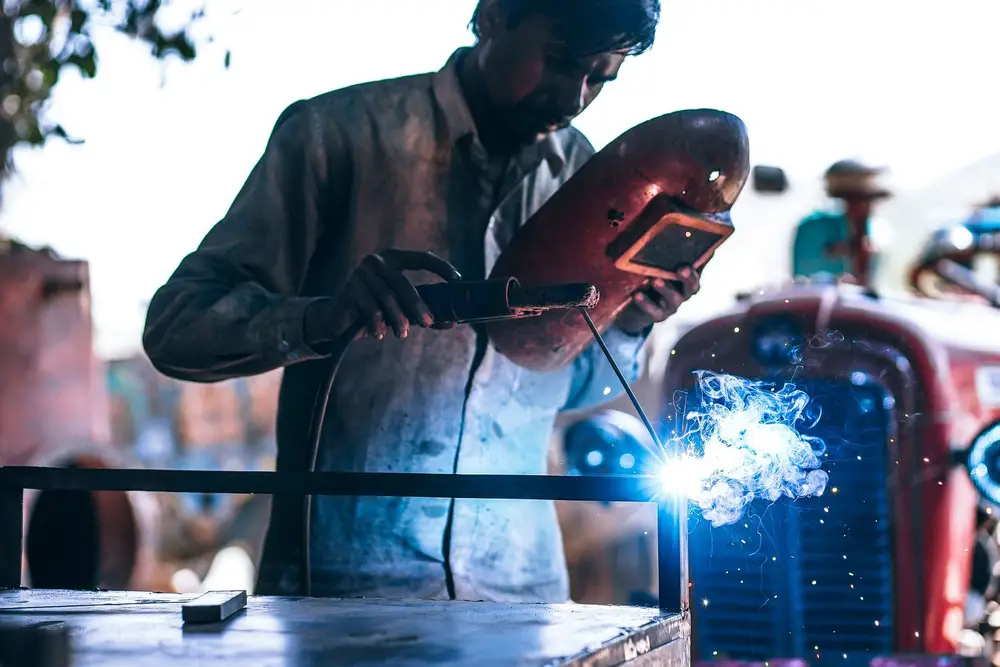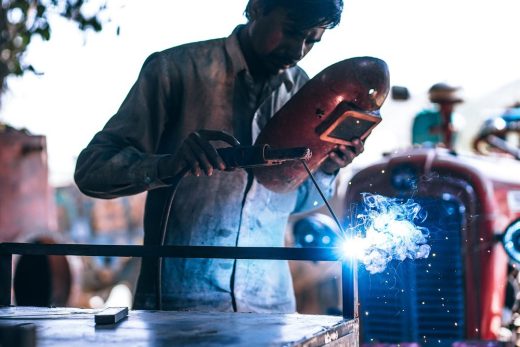Understanding the techniques involved in metal fabrication, Unite two pieces of metal by melting surfaces
Understanding the Techniques involved in Metal Fabrication
11 May 2023
Metal fabrication occurs when raw materials are manipulated using various methods, creating metal components and structures. These procedures entail cutting, bending, joining, and assembling metals to make complete components. Construction, the auto industry, aircraft, manufacturing, and chill rolls manufacturers are just a few sectors where metal fabrication is essential. This guide will discuss the various methods for fabricating metal and the tools and machinery involved in each technique.
Welding
The technique of uniting two pieces of metal by melting their surfaces and letting them cool, establishing a solid bond, is called welding. There are numerous ways to weld, including:
- Gas metal arc welding (GMAW), sometimes referred to as MIG welding, is a metal fabrication procedure that uses a wire electrode to spark an arc between the metal surface being welded and the welding gun. This method is frequently used for welding steel and aluminum.
- TIG welding: Also named gas tungsten arc welding (GTAW), TIG welding involves forming an arc between the metal being welded and the welding gun using a tungsten electrode. This method is frequently used to weld thin materials or to produce precise welds.
- Stick welding: Also named shielded metal arc welding (SMAW), stick welding uses a consumable electrode that is coated in flux to create an arc between the metal being welded and the welding gun. Thick materials and outdoor welding applications both frequently use this method.
Bending
Metal is shaped by exerting force during the process of bending. Bending can be done in a variety of ways, such as:
- Press brake bending: This technique includes bending metal with a press brake. The metal is bent into the desired shape by the press brake, which exerts a force. This method is frequently utilized for the production of metal components and structures across a range of industries.
- Roll bending: this one uses a roller to bend metal. The metal is positioned between two rollers and under pressure to turn it into the correct shape. This method is frequently employed for making curved metal components.
Cutting
Cutting is the process of removing extra material from metal to shape or enlarge it as needed. There are numerous ways to cut metal, including:
- Laser cutting: A laser comes in handy for cutting through metal during the process of laser cutting. It is a precise cutting technique frequently used for complicated, high-quality metal designs.
- Shearing: Shearing is the process of employing a shear blade to cut metal. Typically, it is used to cut sheet metal or thin materials. Shears, both manual and automatic, are frequently employed in this operation.
- Sawing: Sawing is the process of utilizing a saw blade to cut metal, frequently used to cut thick materials or sizable metal components. For this process, both handheld and automatic saws are commonly utilized.
Assembling
To put together various metal parts into a final product, you must assemble them. There are multiple ways to put something together, such as:
- A rivet is used to fasten two pieces of metal together during the riveting process. To permanently join the two pieces of metal, the rivet is first placed in a hole that has been previously drilled and then expanded.
- In the bolting process, two pieces of metal are connected by a bolt. A nut and washer are used to tighten the bolt after it has been put into pre-drilled holes in the metal to form a solid bond.
- Adhesive bonding: Adhesive bonding combines two pieces of metal using an adhesive. The metal surfaces are coated with adhesive, which is then given time to cure and form a solid bond.
Tools and equipment
Different tools and equipment are used in metal manufacturing depending on the employed process. Here are a few illustrations of specific tools and machinery used in metal fabrication:
Welding apparatus
Metal components are connected using welding apparatus. Melting the metal surfaces and fusing them is the process of welding. Guns, electrodes, and safety supplies like gloves and helmets are all included in the category of welding equipment. The type of equipment will vary depending on the welding procedure used.
Bending tools
Metal is shaped into certain angles and curves using bending tools. These consist of rollers, press brakes, and bending machines. Press brakes exert pressure on the metal to turn it into the desired shape. Metal sheets and plates are rolled to create cylinders, cones, and other curved shapes. Bending machines can also transform metal pipes and tubes to precise angles.
Cutting blades
Steel fabricators at Network Steel Brisbane use cutting tools to shape and size the metals as needed. Saws, shears, and laser cutters are the often used cutting instruments in metal fabrication. Metal sheets and bars are cut into smaller pieces using a saw, while metal sheets are cut into specified forms using a shear. Laser cutting is a more recent method that employs lasers to cut through metal accurately.
Fastening tools
Fastening tools are used to connect separate metal components to generate completed goods. Bolts, glue, and riveters are some of these tools. Riveting is the technique of permanently joining two pieces of metal together utilizing a specialized tool. Bolts come in handy to connect two pieces of metal securely and firmly. Other metal components are joined using adhesives, such as glue or other sticky substances.
Finishing tools
The metal’s surface is buffed and refined using finishing tools, enhancing its beauty and functionality. These instruments include polishing machines, sanders, and grinders. The surface of the metal is smoothed with sanders after the extra metal has been removed with grinders. Other polishing tools are used to give the metal a polished, shining sheen.
Techniques involved in metal fabrication conclusion
Metal fabrication encompasses a variety of procedures and methods, such as cutting, bending, welding, and assembling. Every procedure has a unique set of tools and equipment requirements, and the kind of tools and equipment utilized will vary depending on the technique. By understanding the numerous types of metal fabrication processes and the tools and equipment used in each cycle, manufacturers and fabricators may make high-quality metal products that satisfy the needs of many sectors.
Comments on this Understanding the Techniques Involved in Metal Fabrication article are welcome
Metal Building Design
Metal Building Posts
Why consider eco-friendly metal roof installation
Lower energy costs with stylish metal roof
Most common metals used in architecture
Metal wall art: perks and things to consider
Guide to Insulating Your Metal Building
Retrofitting metal building insulation installation
Building Articles
Contemporary Buildings – a recent selection from the e-architect website:
Ghyll House, East Sussex Property
Comments / photos for the Understanding the Techniques Involved in Metal Fabrication page welcome






